What Role Do Mangrove Forests Play in Marine Biodiversity?
Mangrove forests are not just a collection of trees; they are vibrant ecosystems that play a crucial role in supporting marine biodiversity. Picture a bustling nursery where juvenile fish find refuge and crustaceans scuttle about, all while birds soar above, creating a symphony of life. These unique coastal forests act as a bridge between land and sea, providing essential habitats that foster a rich array of marine species. The intricate root systems of mangroves create sheltered environments, offering protection from predators and harsh weather conditions. This nurturing quality makes them indispensable for the survival of various aquatic organisms, ultimately contributing to the overall health of our oceans.
One of the most fascinating aspects of mangroves is their ability to support different life forms. They serve as breeding grounds for fish, crustaceans, and even birds, creating a complex web of life. The unique structure of mangrove trees, with their interlocking roots, provides a safe haven for young fish to grow and develop. This is particularly important because many fish species rely on these environments during their early stages of life. Without mangroves, the delicate balance of marine ecosystems would be severely disrupted, leading to declines in fish populations and a cascading effect on the entire food web.
But it's not just fish that benefit from mangrove ecosystems. Crustaceans, such as crabs and shrimp, find their homes nestled among the roots, where they can thrive away from larger predators. These crustaceans play a vital role in the coastal food web, serving as a food source for larger animals and helping to break down organic materials, thus contributing to nutrient cycling. Additionally, many bird species rely on mangroves for nesting and feeding, making these forests a key indicator of ecological health in coastal regions. The presence of diverse bird species often signals a thriving ecosystem, showcasing the interconnectedness of life within these habitats.
In essence, mangrove forests are a treasure trove of biodiversity. They host a myriad of species, including invertebrates like mollusks and polychaetes, which are crucial for nutrient cycling. These organisms serve as food sources for higher trophic levels, further enriching the marine ecosystem. The loss of mangroves would not only threaten the species that inhabit them but also jeopardize the health of adjacent marine environments. Therefore, understanding and protecting these vital ecosystems is essential for maintaining marine biodiversity.
However, despite their importance, mangrove forests face significant threats from human activities and climate change. Deforestation, coastal development, and pollution are just a few of the challenges these ecosystems encounter. As we delve deeper into the ecological significance of mangroves, it becomes clear that concerted conservation efforts are necessary to safeguard these incredible habitats and the diverse life they support.
- What are mangrove forests?
Mangrove forests are coastal ecosystems characterized by salt-tolerant trees that thrive in intertidal zones, providing critical habitats for various marine species.
- Why are mangroves important for marine biodiversity?
Mangroves serve as nurseries for juvenile fish, habitats for crustaceans, and nesting grounds for birds, thus enhancing the overall health and diversity of marine ecosystems.
- What threats do mangrove forests face?
Threats include deforestation, climate change, pollution, and coastal development, all of which can lead to habitat loss and decreased biodiversity.
- How can we help protect mangrove forests?
Engaging in conservation efforts, supporting restoration projects, and promoting sustainable practices can significantly contribute to the protection of mangrove ecosystems.
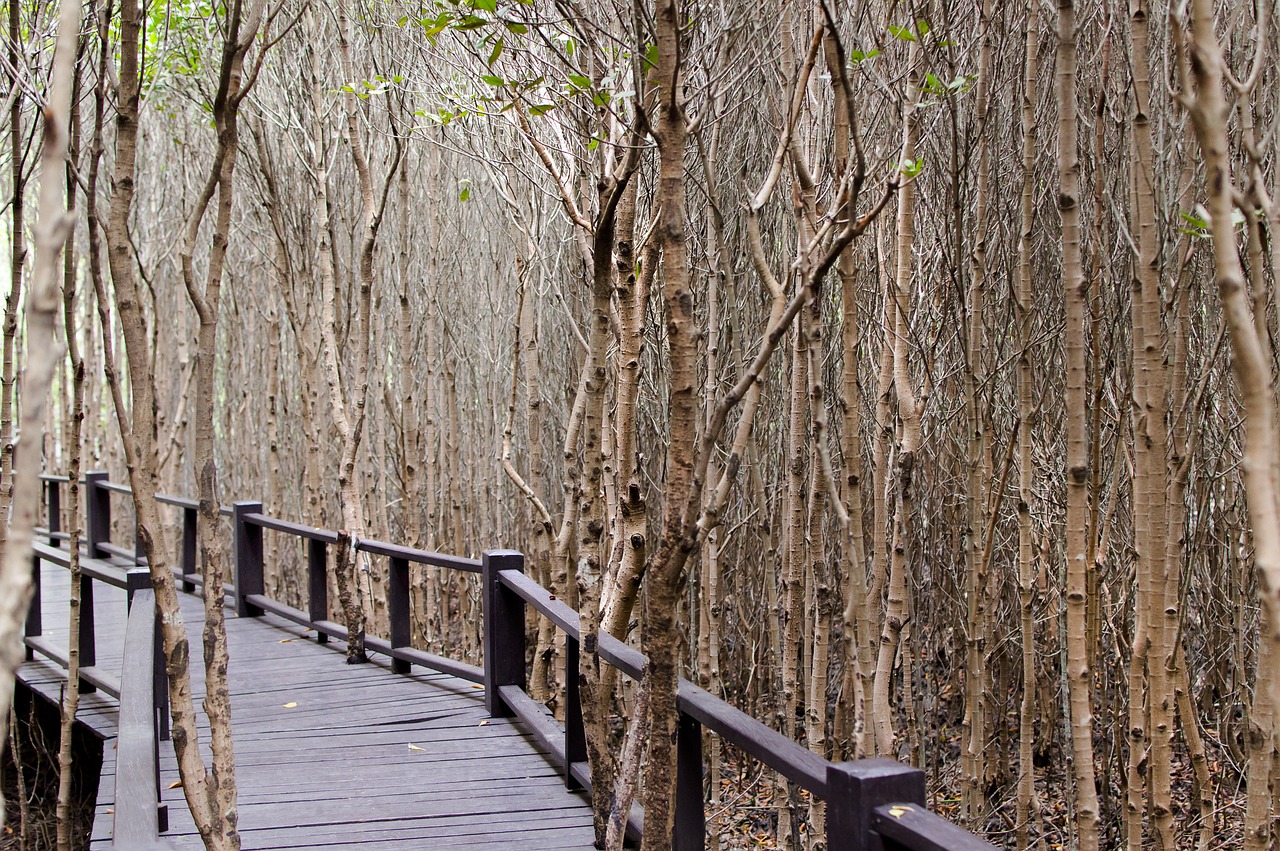
The Importance of Mangrove Ecosystems
This article explores the significance of mangrove forests in supporting marine biodiversity, their ecological functions, threats they face, and conservation efforts to protect these vital ecosystems.
Mangrove ecosystems are not just beautiful coastal landscapes; they are powerhouses of biodiversity. These unique forests, found at the interface of land and sea, play a crucial role in supporting a wide variety of marine species. By providing essential habitats, they act as nurseries for many aquatic organisms, including fish and crustaceans. This nursery function is vital for the survival of juvenile species, which rely on the sheltered waters and abundant food sources that mangroves offer.
Furthermore, mangroves contribute significantly to the overall health of marine ecosystems. They help stabilize shorelines, reduce erosion, and protect coastal areas from storm surges and flooding. Their complex root systems trap sediments and filter pollutants, improving water quality and creating a healthier environment for marine life. In essence, mangroves act as a natural barrier, safeguarding coastal communities while fostering a rich tapestry of biodiversity.
In addition to their ecological benefits, mangrove forests also provide economic advantages to local communities. They support fisheries, tourism, and even traditional medicine. The sustainable management of these resources can lead to long-term benefits for both the environment and the people who depend on it. For instance, the fish populations that thrive in mangrove areas not only bolster local diets but also contribute to the livelihoods of countless fishermen.
To illustrate the importance of mangrove ecosystems, consider the following table that highlights some of their key functions:
| Function | Description |
|---|---|
| Habitat Provision | Mangroves serve as critical habitats for various marine species, including fish, birds, and invertebrates. |
| Coastal Protection | They protect shorelines from erosion and mitigate the impact of storms and rising sea levels. |
| Water Quality Improvement | Mangroves filter pollutants and trap sediments, enhancing water quality for marine life. |
| Carbon Sequestration | They absorb carbon dioxide, helping to combat climate change. |
In conclusion, the importance of mangrove ecosystems extends far beyond their stunning beauty. They are essential for maintaining marine biodiversity, supporting local economies, and protecting coastal communities. As we continue to face environmental challenges, understanding and preserving these vital ecosystems is more important than ever.
- What are mangrove forests?
Mangrove forests are coastal ecosystems characterized by salt-tolerant trees and shrubs that thrive in intertidal zones.
- Why are mangroves important for marine life?
Mangroves provide critical habitats for juvenile fish and other marine species, acting as nurseries and feeding grounds.
- What threats do mangrove forests face?
Threats include deforestation, climate change, and pollution, which can lead to habitat loss and decreased biodiversity.
- How can we help protect mangrove ecosystems?
Participating in restoration projects, supporting sustainable practices, and advocating for conservation can make a difference.

Species Supported by Mangroves
Mangroves are not just trees; they are bustling ecosystems teeming with life. These unique coastal forests provide essential habitats for a variety of marine species, creating a vibrant tapestry of biodiversity. Imagine walking through a mangrove forest, where the intertwining roots and lush foliage create a sanctuary for countless creatures. From fish to birds, mangroves serve as a crucial support system for many species, each playing a vital role in the ecological balance of coastal regions.
One of the most significant contributions of mangroves is their role as nurseries for juvenile fish. Many species, including snapper and grouper, rely on the sheltered waters of mangrove swamps to grow and develop. The dense root systems offer protection from predators, while the abundance of food sources, such as small crustaceans and detritus, ensures that young fish thrive. This relationship is not just beneficial for the fish; it is essential for the health of adjacent marine environments. Healthy fish populations contribute to commercial fisheries, supporting local economies and food security.
In addition to fish, mangroves are home to a plethora of crustaceans. The intricate root systems provide ideal habitats for species like shrimp and crabs, which play a significant role in the coastal food web. These crustaceans are not only vital for the diet of larger predators but also contribute to nutrient cycling within the ecosystem. As they scavenge and feed, they help break down organic matter, returning nutrients to the water and supporting the growth of other aquatic organisms.
Birds also find a haven in mangrove forests. The dense foliage offers nesting sites and abundant food sources, attracting a variety of avian species. From herons to kingfishers, these birds rely on mangroves for their survival. The presence of diverse bird species often indicates the ecological health of coastal environments, making mangroves a critical habitat for avifauna. Observing these birds in their natural habitat can be a breathtaking experience, showcasing the intricate connections within the ecosystem.
Moreover, mangroves support a rich diversity of invertebrates, including mollusks and polychaetes. These creatures play a crucial role in nutrient cycling and serve as food sources for higher trophic levels in the food web. The presence of these invertebrates not only enhances biodiversity but also contributes to the overall productivity of the mangrove ecosystem. Their intricate interactions within the habitat underscore the complexity and importance of these coastal forests.
In summary, mangrove ecosystems are vital for supporting a myriad of species. Their unique structure and ecological functions create a haven for fish, crustaceans, birds, and invertebrates, each contributing to the rich biodiversity of coastal regions. Protecting these ecosystems is essential for maintaining the delicate balance of marine life and ensuring the sustainability of our oceans.
- What are the main species found in mangrove forests? Mangrove forests are home to various species, including juvenile fish, crustaceans, birds, and invertebrates.
- Why are mangroves important for fish populations? Mangroves provide shelter and abundant food sources for juvenile fish, which are crucial for maintaining healthy populations.
- How do mangroves support bird species? The dense foliage of mangroves offers nesting sites and food sources, attracting various bird species that rely on these ecosystems for survival.
- What role do invertebrates play in mangrove ecosystems? Invertebrates contribute to nutrient cycling and serve as food sources for higher trophic levels, enhancing the overall productivity of the ecosystem.
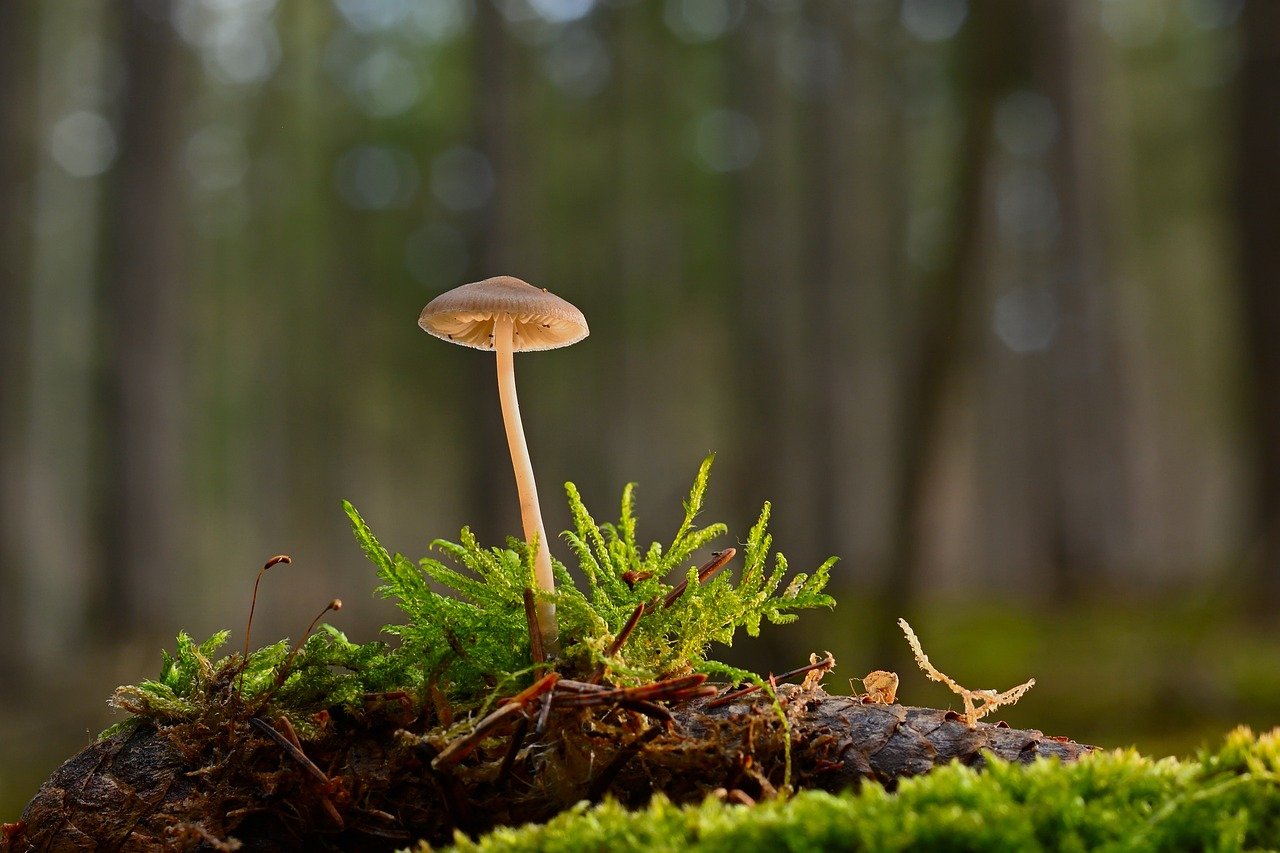
Fish Populations
Mangroves are often referred to as the nurseries of the sea, and for good reason! These unique coastal forests play a pivotal role in supporting fish populations, especially during their juvenile stages. Imagine a bustling underwater city where young fish find refuge from predators, abundant food sources, and a safe place to grow. That's exactly what mangroves provide. The complex root systems of mangrove trees create a labyrinth of shelters, offering protection to juvenile fish from larger predators lurking in open waters.
The significance of mangroves in sustaining fish populations cannot be overstated. Studies have shown that fish species such as snapper, grunts, and groupers thrive in these environments. The roots of mangrove trees not only serve as physical barriers against predators but also create an ideal habitat for various organisms that juvenile fish feed on, such as zooplankton and small crustaceans. This rich food web supports the growth and survival of young fish, ultimately contributing to the health of adult fish populations in nearby coral reefs and oceanic environments.
Moreover, the relationship between mangroves and fish populations extends beyond mere shelter. The nutrient-rich waters surrounding mangrove forests support a diverse array of marine life. As organic matter decomposes within the mangroves, it releases essential nutrients into the water, enhancing productivity. This nutrient cycling is crucial for maintaining the delicate balance of marine ecosystems. Without healthy mangrove forests, many fish species would struggle to survive, leading to declines in fish populations and, consequently, affecting the livelihoods of communities that rely on fishing.
It's also worth noting that the health of fish populations is a direct indicator of the overall health of the mangrove ecosystem. When fish thrive, it's a sign that the mangroves are functioning well, providing the necessary conditions for life. Conversely, a decline in fish populations can signal underlying issues, such as pollution or habitat destruction. This interconnectedness highlights the importance of safeguarding mangrove forests not just for the fish, but for the entire marine ecosystem.
In summary, mangroves are vital for sustaining fish populations, acting as nurseries where juvenile fish can grow and thrive. The intricate relationship between these coastal ecosystems and marine life underscores the need for conservation efforts. Protecting mangrove forests is essential not only for the fish that inhabit them but also for the overall health of our oceans and the communities that depend on them.
- Why are mangroves important for fish populations?
Mangroves provide shelter, food, and protection for juvenile fish, allowing them to grow and thrive away from predators. - What types of fish benefit from mangrove ecosystems?
Species like snapper, grunts, and groupers are commonly found in mangrove habitats during their early life stages. - How do mangroves contribute to nutrient cycling?
The decomposition of organic matter in mangrove forests releases nutrients into the surrounding waters, supporting marine life. - What threats do mangroves face that impact fish populations?
Deforestation, climate change, and pollution are significant threats that can disrupt the delicate balance of mangrove ecosystems.
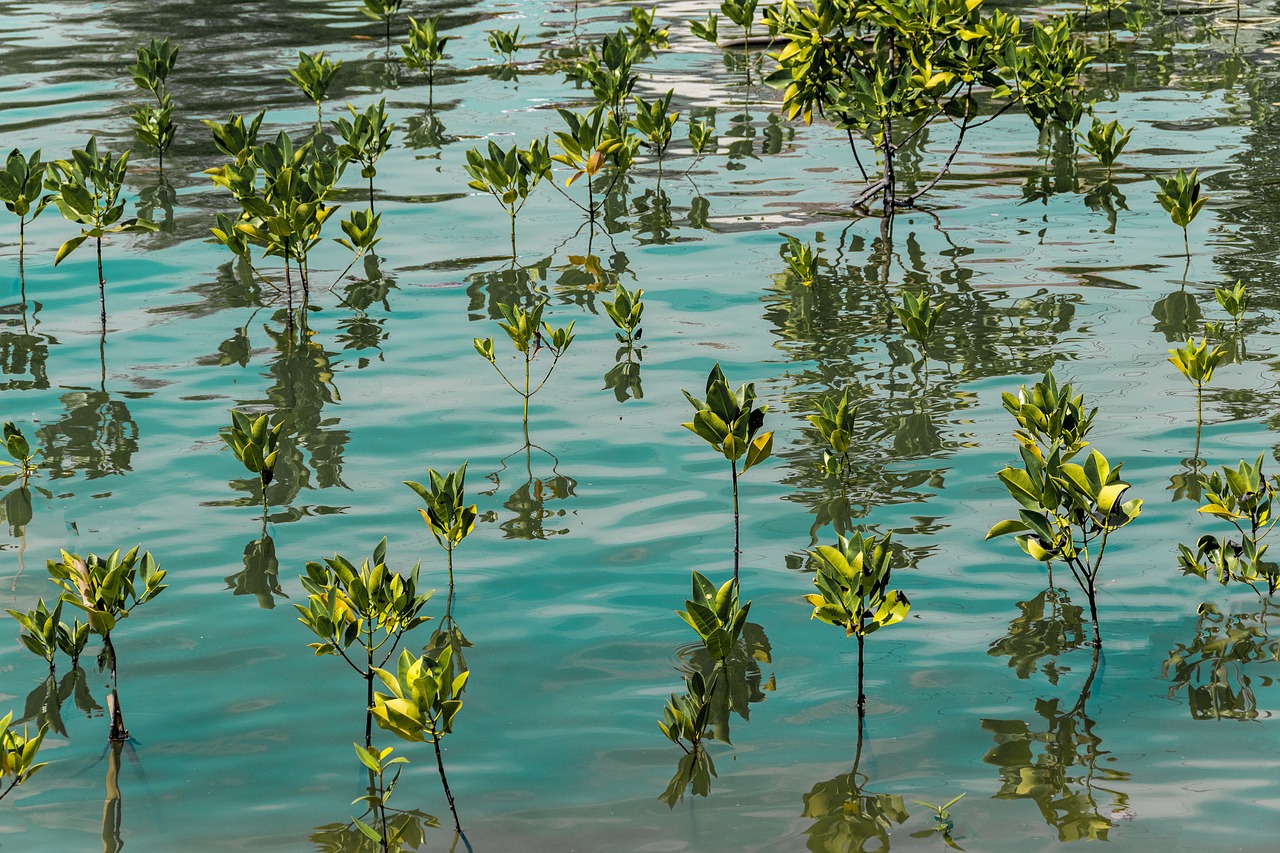
Crustacean Habitats
Mangrove forests are not just beautiful coastal ecosystems; they are also bustling hubs of life, especially for crustaceans. The intricate root systems of mangroves create a **complex habitat** that is essential for various crustacean species, such as crabs, shrimps, and lobsters. These roots provide not only shelter but also a rich source of food, making mangroves a **crucial component** of the coastal food web. Imagine a bustling marketplace where crustaceans find both safety and sustenance—this is precisely what mangrove habitats offer.
The unique structure of mangroves, with their submerged roots and intertidal zones, fosters an environment where crustaceans can thrive. These areas are teeming with organic matter, which serves as a food source for detritivores, a category that includes many crustaceans. The roots trap sediments and organic debris, creating a nutrient-rich environment that supports a diverse array of life. In this way, mangroves act as a **natural nursery**, allowing juvenile crustaceans to grow and develop away from the prying eyes of predators.
Furthermore, crustaceans play a significant role in maintaining the health of mangrove ecosystems. They contribute to nutrient cycling by breaking down organic materials, which in turn supports the growth of mangrove trees and other aquatic plants. This relationship is a perfect example of how interconnected these ecosystems are; the health of crustacean populations directly influences the overall health of mangrove forests.
To understand the importance of crustacean habitats in mangroves, consider the following key points:
- Habitat Structure: The tangled roots provide shelter and breeding grounds for crustaceans.
- Food Sources: Mangroves offer abundant organic material that supports crustacean growth.
- Nutrient Cycling: Crustaceans help decompose organic matter, enriching the ecosystem.
In summary, crustacean habitats within mangrove forests are vital not only for the crustaceans themselves but also for the broader marine ecosystem. Protecting these habitats ensures the sustainability of both crustacean populations and the overall health of coastal environments. Without the lush and intricate mangrove ecosystems, we risk losing these essential marine contributors. So, the next time you stroll along a mangrove shoreline, take a moment to appreciate the bustling life hidden among the roots—it's a world of wonder that deserves our attention and protection.
1. What types of crustaceans are commonly found in mangrove forests?
Mangrove forests are home to various crustaceans, including crabs, shrimps, and lobsters. These species thrive in the unique habitat provided by mangrove roots.
2. How do crustaceans contribute to the health of mangrove ecosystems?
Crustaceans play a crucial role in nutrient cycling by breaking down organic matter, which enriches the ecosystem and supports the growth of mangrove trees and other aquatic plants.
3. What threats do crustacean habitats in mangroves face?
Threats include coastal development, pollution, and climate change, all of which can lead to habitat destruction and loss of biodiversity.
4. How can we help protect mangrove ecosystems and their crustacean inhabitants?
Engaging in conservation efforts, supporting sustainable practices, and raising awareness about the importance of mangroves can significantly contribute to their protection.
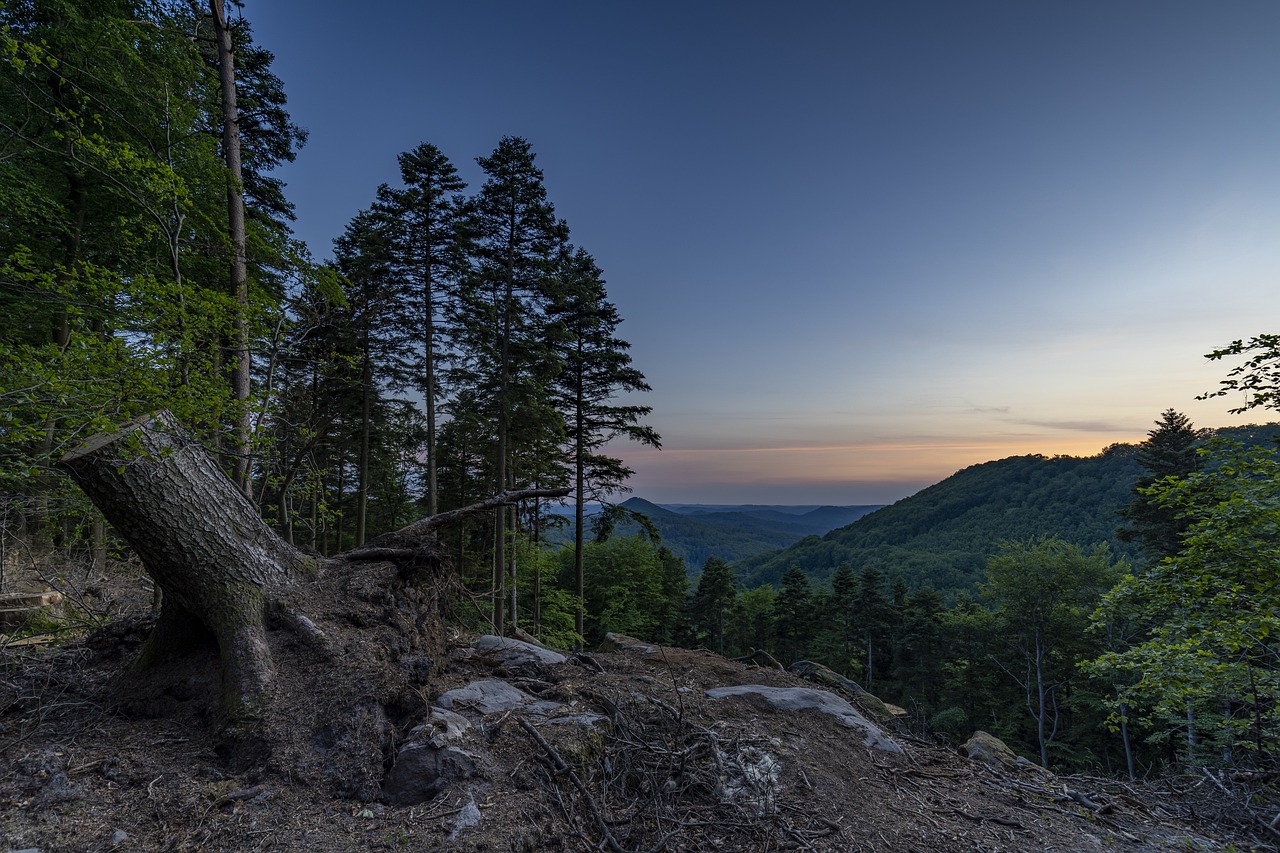
Bird Species
Mangrove forests are not just a sanctuary for fish and crustaceans; they also serve as a vital habitat for a remarkable variety of . These unique ecosystems provide essential resources such as nesting sites, food, and shelter, making them a crucial stopover for migratory birds. The intertwining roots and dense foliage of mangroves create a safe haven, allowing birds to thrive and contribute to the overall biodiversity of coastal regions. Among the many species that call these forests home, some notable examples include the Kingfisher, Heron, and Osprey, each playing a specific role in the ecosystem.
Birds rely on mangrove habitats for various reasons. For instance, the Great Egret and Snowy Egret are often seen wading through the shallow waters, hunting for fish and crustaceans. Their presence indicates a thriving aquatic ecosystem, which is essential for maintaining the health of the coastal environment. Additionally, the Black-crowned Night-Heron uses the mangroves as a nesting site, where it can raise its young away from terrestrial predators. This connection between birds and mangrove forests highlights the intricate web of life that exists within these ecosystems.
Furthermore, the migratory patterns of many bird species are closely linked to the availability of mangrove habitats. During migration, birds often stop at mangrove forests to rest and refuel, making these areas critical for their survival. The loss of these vital habitats due to human activities or climate change not only threatens the birds that depend on them but also disrupts the entire ecosystem. Protecting mangrove forests is, therefore, essential not only for the birds but for the broader health of marine biodiversity.
In summary, the role of birds in mangrove ecosystems is multifaceted. They contribute to pest control, seed dispersal, and nutrient cycling, which are all vital for maintaining the ecological balance. Without the presence of these avian species, the health of mangrove forests and the marine biodiversity they support could be severely compromised. It is imperative that we recognize the importance of these habitats and take action to protect them for the sake of our feathered friends and the overall health of our planet.
- Why are mangrove forests important for birds?
Mangrove forests provide critical nesting sites, food, and shelter for numerous bird species, making them essential for avian biodiversity. - What types of birds can be found in mangrove forests?
Many species, including Kingfishers, Herons, and Ospreys, rely on mangroves for habitat and feeding. - How do mangrove forests impact marine biodiversity?
By supporting various bird species, mangroves contribute to pest control and nutrient cycling, which are vital for maintaining healthy marine ecosystems. - What threats do mangrove forests face?
Deforestation, climate change, and pollution are significant threats to mangrove forests, impacting the birds and other species that depend on them.

Invertebrate Diversity
Mangrove forests are like bustling cities beneath the water's surface, teeming with life and diversity, especially when it comes to invertebrates. These creatures, which include mollusks, polychaetes, and various crustaceans, play a crucial role in maintaining the health of coastal ecosystems. They are not just random inhabitants; they are essential players in the intricate web of life that thrives in these unique environments.
The diversity of invertebrates found in mangrove ecosystems is astonishing. For instance, mollusks such as oysters and clams help filter water, improving its quality and providing a cleaner habitat for other marine species. Polychaetes, often found burrowing in the mud, contribute to nutrient cycling by breaking down organic matter, which enriches the sediment and supports plant life. This interdependence illustrates how invertebrates are fundamental to the overall health of the mangrove ecosystem.
Moreover, the presence of invertebrates can serve as an indicator of ecological balance. A rich diversity of these organisms often signifies a healthy mangrove habitat. Conversely, a decline in invertebrate populations can signal environmental stress, prompting urgent conservation measures. The following table summarizes some key invertebrate species found in mangrove ecosystems along with their ecological roles:
| Invertebrate Species | Ecological Role |
|---|---|
| Mollusks (e.g., Oysters, Clams) | Water filtration and habitat stabilization |
| Polychaetes | Nutrient cycling and sediment aeration |
| Crustaceans (e.g., Crabs, Shrimp) | Food source for higher trophic levels and scavengers |
In conclusion, the invertebrate diversity within mangrove forests is not only fascinating but also vital for the ecological balance of coastal regions. Protecting these habitats ensures that the intricate relationships among species continue to thrive, ultimately supporting marine biodiversity as a whole. By understanding and appreciating the roles of these invertebrates, we can better advocate for the conservation of mangrove ecosystems.
- What are mangrove forests?
Mangrove forests are coastal ecosystems characterized by salt-tolerant trees and shrubs that thrive in intertidal zones.
- Why are mangroves important for marine biodiversity?
Mangroves provide essential habitats for various marine species, acting as nurseries and feeding grounds, thus supporting overall marine biodiversity.
- What threats do mangrove forests face?
Threats include deforestation, climate change, pollution, and coastal development, which can severely impact marine life and ecological balance.
- How can we help conserve mangrove ecosystems?
Participating in restoration projects, supporting sustainable practices, and engaging with local communities can significantly contribute to mangrove conservation.
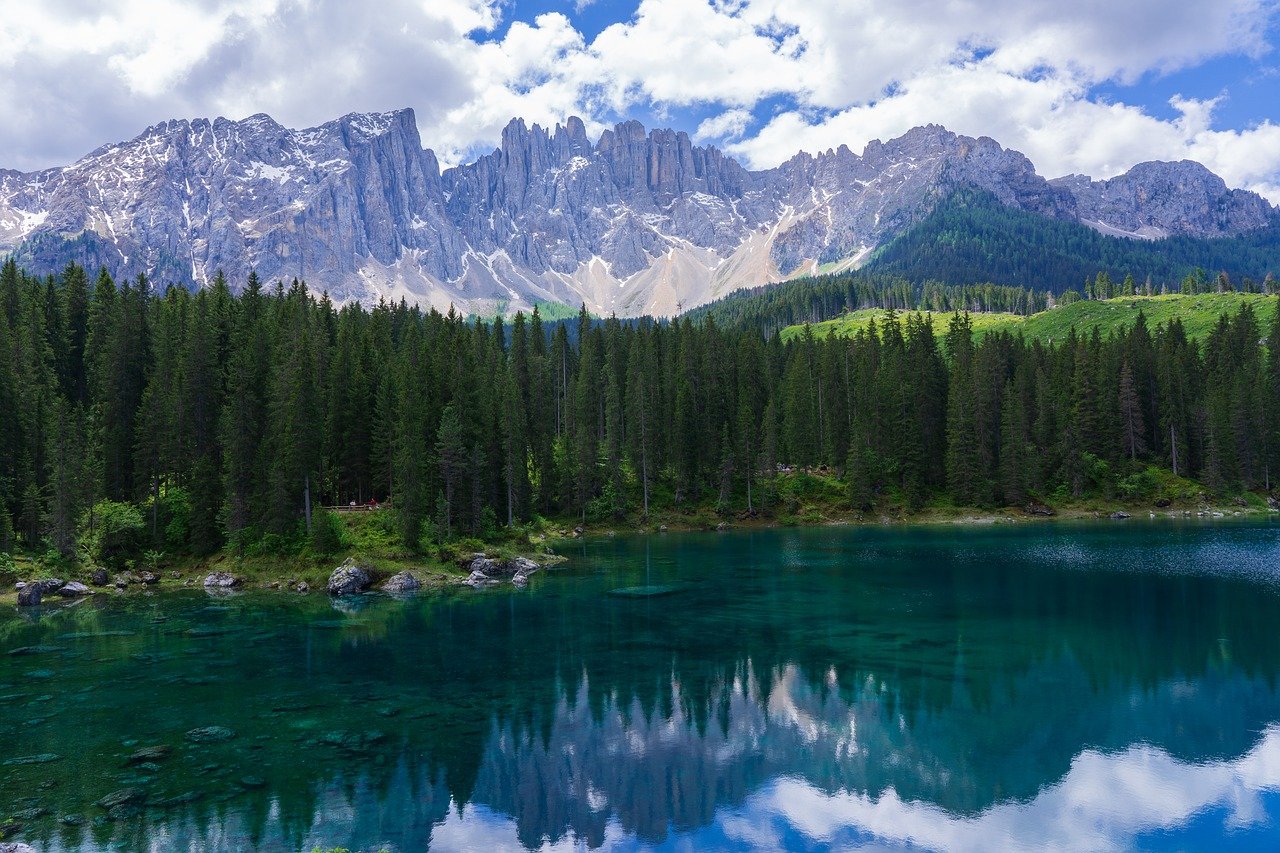
Threats to Mangrove Forests
Mangrove forests, the unsung heroes of coastal ecosystems, are facing an array of threats that jeopardize their existence and, by extension, the marine biodiversity they support. One of the most pressing issues is deforestation. This is often driven by human activities such as coastal development, agriculture, and aquaculture. When mangroves are cleared for new hotels, resorts, or shrimp farms, we lose not just trees but entire ecosystems. The intricate web of life that thrives within these forests is disrupted, leading to significant habitat loss for countless marine species.
Another major threat is climate change. Rising sea levels, a consequence of global warming, pose a significant risk to mangrove habitats. Imagine a protective barrier slowly being submerged; that’s what happens to mangroves when the ocean encroaches on their territory. Increased storm intensity also leads to more frequent and severe flooding, which can devastate mangrove ecosystems. The resilience of these forests is tested as they struggle to adapt to rapid environmental changes, often resulting in further loss of biodiversity.
Pollution is yet another adversary. Runoff from agricultural fields, urban areas, and industrial sites introduces harmful chemicals and waste into coastal waters. This pollution not only affects the health of mangroves but also the myriad of species that rely on these ecosystems for survival. Toxic substances can accumulate in the food chain, posing risks to both marine life and human health.
To illustrate the impact of these threats, consider the following table:
| Threat | Impact on Mangrove Ecosystems |
|---|---|
| Deforestation | Habitat loss for marine species; disruption of ecosystem services |
| Climate Change | Increased sea levels; more severe storms; habitat degradation |
| Pollution | Contamination of waters; health risks for marine life and humans |
In summary, the threats to mangrove forests are not just environmental issues; they are urgent calls to action. The health of these ecosystems is inextricably linked to the health of our oceans and, ultimately, to the well-being of our planet. Addressing these threats requires a collective effort from governments, communities, and individuals alike. The time to act is now, before we lose these vital ecosystems forever.
- What are mangrove forests?
Mangrove forests are coastal ecosystems characterized by salt-tolerant trees that thrive in intertidal zones. They provide essential habitats for various marine species.
- Why are mangroves important for marine biodiversity?
Mangroves serve as nurseries for juvenile fish and habitats for numerous species, thus enhancing biodiversity and contributing to healthy marine ecosystems.
- What threats do mangrove forests face?
Major threats include deforestation, climate change, and pollution, all of which significantly impact their health and the marine life that depends on them.
- How can we help protect mangrove forests?
Engaging in conservation efforts, supporting restoration projects, and promoting sustainable practices are essential steps individuals and communities can take to protect mangrove ecosystems.
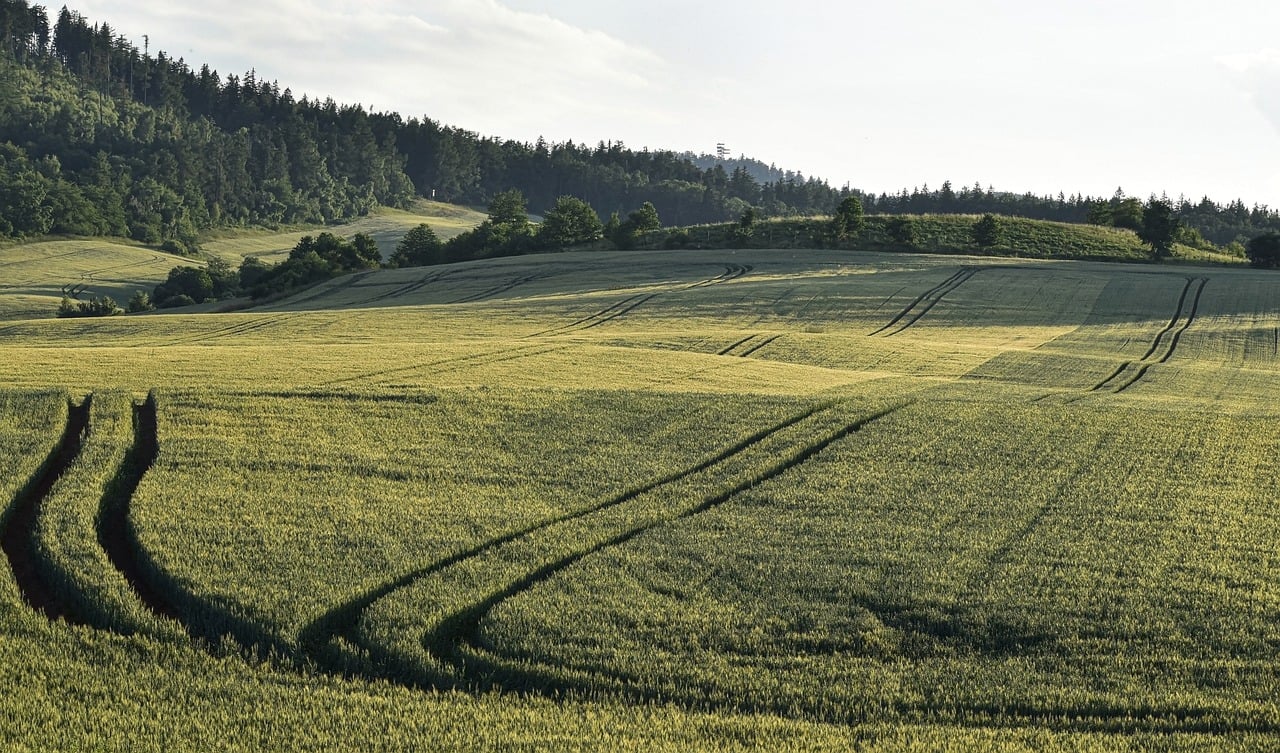
Human Activities
Human activities are one of the most significant threats to mangrove forests, leading to a cascade of negative impacts on marine biodiversity. As coastal populations grow, the demand for land and resources intensifies, often resulting in the destruction of these vital ecosystems. Coastal development, including the construction of resorts, housing, and commercial facilities, frequently encroaches upon mangrove areas. This not only leads to habitat loss but also disrupts the intricate balance of coastal ecosystems.
Moreover, agriculture and aquaculture practices can have devastating effects on mangrove habitats. For instance, the conversion of mangrove forests into shrimp farms has become a common practice in many regions. While this may provide short-term economic benefits, the long-term consequences are dire. The removal of mangroves for farming not only eliminates critical habitats for marine life but also increases the vulnerability of coastal areas to erosion and flooding.
Pollution is another alarming consequence of human activities affecting mangrove ecosystems. Runoff from agricultural fields, urban areas, and industrial sites can introduce harmful chemicals and sediments into coastal waters. This pollution can suffocate mangrove roots and disrupt the delicate balance of life within these habitats. Additionally, the accumulation of waste, including plastics, poses a severe threat to the health of both mangroves and the marine species that depend on them.
To illustrate the impact of human activities on mangrove forests, consider the following table:
| Human Activity | Impact on Mangroves |
|---|---|
| Coastal Development | Habitat loss, increased erosion, and disruption of ecosystem services |
| Agriculture | Conversion of mangroves to farmland, leading to biodiversity loss |
| Aquaculture | Destruction of mangrove habitats for shrimp and fish farming |
| Pollution | Introduction of harmful chemicals, sedimentation, and waste accumulation |
The consequences of these activities extend beyond just the loss of mangrove forests. They can lead to a decline in fish populations, as many species rely on mangroves for breeding and shelter. Furthermore, the loss of mangroves can exacerbate climate change impacts, as these ecosystems play a crucial role in carbon sequestration. By understanding the ramifications of our actions, we can begin to take steps toward more sustainable practices that protect these invaluable ecosystems.
- What are mangrove forests? Mangrove forests are coastal ecosystems characterized by salt-tolerant trees and shrubs that thrive in intertidal zones.
- Why are mangroves important for marine biodiversity? They provide essential habitats for various marine species, acting as nurseries for fish and offering shelter for crustaceans and birds.
- How do human activities threaten mangrove forests? Activities such as coastal development, agriculture, and pollution lead to habitat loss and degradation, impacting marine life.
- What can be done to protect mangrove forests? Conservation efforts, including restoration projects and community engagement, are vital for preserving these ecosystems.
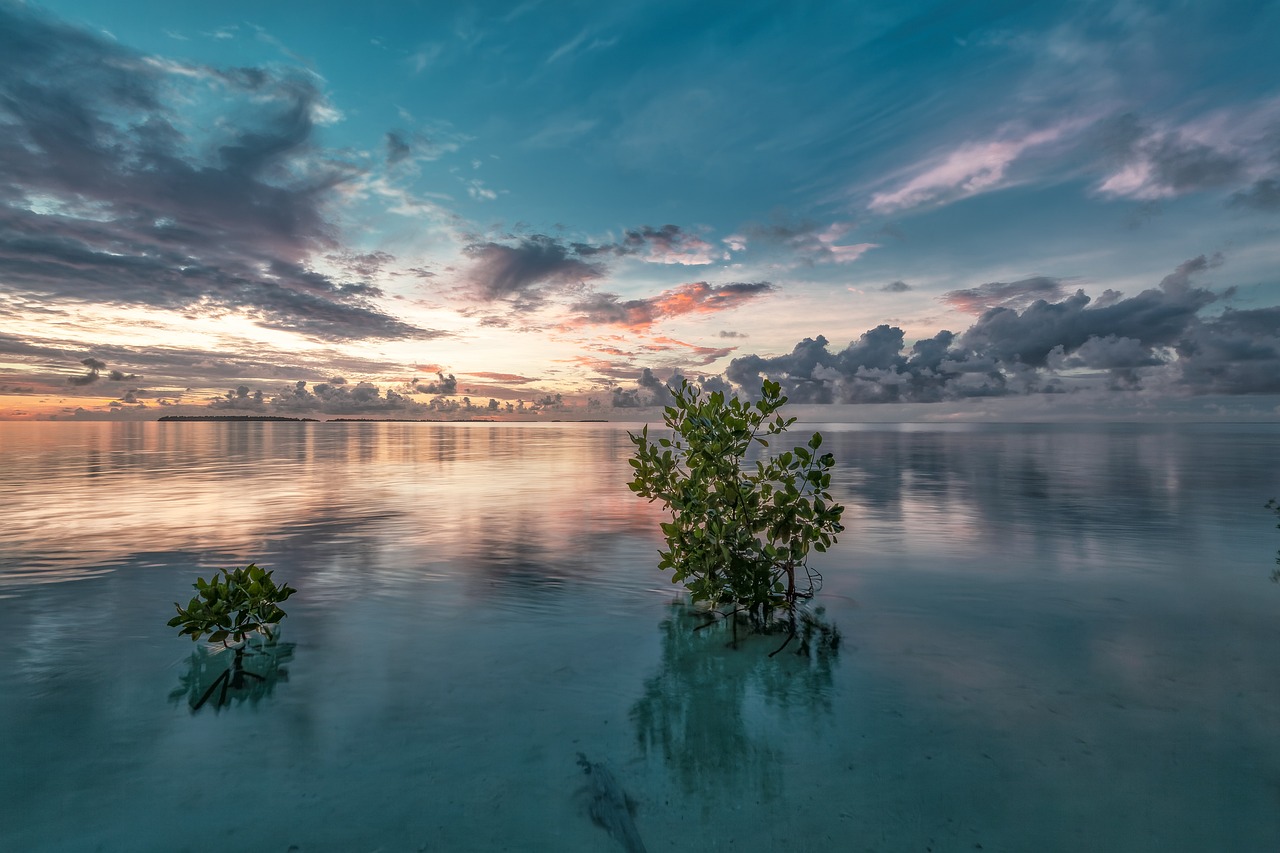
Climate Change Impacts
Climate change is not just a distant threat; it is an immediate reality that is reshaping our planet, and mangrove forests are feeling the heat—literally! Rising sea levels, intensified storms, and changing weather patterns are wreaking havoc on these vital ecosystems. Imagine a protective barrier that not only shelters coastlines but also nurtures diverse marine life, slowly being eroded by climate-induced changes. The consequences of climate change on mangroves are profound and multifaceted, affecting both the forests themselves and the myriad species that depend on them.
One of the most alarming impacts of climate change is the rising sea levels, which can inundate mangrove forests, leading to significant habitat loss. As saltwater intrudes into freshwater ecosystems, it alters the delicate balance that many species rely on. This shift can be catastrophic for juvenile fish and crustaceans that find refuge in mangrove roots, as their nursery grounds disappear under the rising tides. Moreover, increased salinity can hinder the growth of mangrove trees, making them more vulnerable to disease and reducing their ability to sequester carbon effectively.
Furthermore, the frequency and intensity of storms have escalated, resulting in stronger winds and more destructive waves that can uproot mangrove trees and damage their intricate root systems. These roots are not just important for the trees; they serve as crucial habitats for a variety of marine organisms. When storms strike, the destruction can lead to a domino effect, disrupting food webs and diminishing biodiversity. For instance, a study found that mangrove loss due to storm damage can lead to a 50% decline in fish populations in adjacent waters within just a few years. This is a stark reminder of how interconnected our ecosystems are.
Additionally, rising temperatures can affect the reproductive cycles of many species that rely on mangroves. For example, fish that spawn in these environments may find their breeding patterns disrupted, leading to decreased populations over time. The intricate dance of life that occurs in mangrove forests is delicate, and even slight changes in temperature can throw it off balance. Similarly, the increased frequency of algal blooms, fueled by warmer waters and nutrient runoff, can choke out the light that mangroves need to thrive, further exacerbating their decline.
To truly grasp the extent of climate change impacts on mangrove ecosystems, we must consider the broader implications for marine biodiversity. The loss of mangroves is not just a local issue; it has far-reaching effects on global marine health. As we lose these forests, we are not only jeopardizing the species that inhabit them but also the countless human communities that rely on healthy oceans for their livelihoods.
In summary, the impacts of climate change on mangrove forests are severe and complex, threatening their survival and the biodiversity they support. If we do not act swiftly and decisively, we risk losing not only these essential ecosystems but also the myriad benefits they provide to our planet. It is a call to action for all of us—conservation, restoration, and sustainable management are vital to preserving these natural wonders for future generations.
- What are mangrove forests?
Mangrove forests are coastal ecosystems found in tropical and subtropical regions, characterized by salt-tolerant trees that thrive in intertidal zones.
- Why are mangroves important for marine biodiversity?
Mangroves provide critical habitats for various marine species, serving as nurseries for juvenile fish and offering shelter for crustaceans and birds.
- How does climate change affect mangrove forests?
Climate change leads to rising sea levels, increased storm intensity, and altered weather patterns, all of which threaten the survival of mangrove ecosystems.
- What can we do to help conserve mangrove forests?
Engaging in restoration projects, supporting sustainable management practices, and raising awareness about the importance of mangroves can help protect these ecosystems.

Conservation Efforts
Conserving mangrove forests is not just a noble endeavor; it is an absolute necessity for the health of our planet's marine biodiversity. These ecosystems are under constant threat, and without effective conservation strategies, we risk losing not only the mangroves themselves but also the myriad species that depend on them. Effective conservation strategies are essential to protect mangrove forests and their biodiversity. Initiatives include restoration projects, sustainable management practices, and community engagement to preserve these vital ecosystems.
One of the most promising approaches to conservation is through restoration projects. These initiatives focus on replanting mangroves and rehabilitating degraded areas. By restoring these habitats, we can enhance biodiversity while also mitigating climate change impacts. For instance, studies have shown that reestablishing mangrove cover can significantly improve fish populations and provide essential services like coastal protection and carbon sequestration.
| Restoration Benefits | Impact on Biodiversity |
|---|---|
| Improved Fish Habitats | Increased juvenile fish populations |
| Enhanced Carbon Sequestration | Mitigation of climate change |
| Coastal Protection | Reduction of erosion and storm damage |
Moreover, engaging local communities in conservation efforts is crucial. When communities are involved, they become stewards of the mangrove ecosystems, ensuring sustainable use and protection of these critical habitats for future generations. Community engagement can take many forms, from educational programs that raise awareness about the importance of mangroves to participatory restoration projects where locals actively plant and care for new mangrove saplings.
Such initiatives not only empower local communities but also foster a sense of ownership and responsibility towards the mangroves. This is particularly important in regions where economic pressures lead to the exploitation of these ecosystems. By providing alternative livelihoods, such as eco-tourism or sustainable fishing practices, communities can benefit economically while also preserving their natural resources.
In addition to grassroots efforts, governmental and non-governmental organizations play a vital role in conservation. They often implement policies that protect mangrove forests, monitor their health, and fund restoration projects. Collaborative efforts between these entities can lead to comprehensive conservation strategies that address both ecological and socio-economic factors. For instance:
- Establishing marine protected areas to limit destructive activities.
- Implementing sustainable aquaculture practices that do not encroach on mangrove habitats.
- Conducting research to better understand the ecological roles of mangroves.
Ultimately, the future of mangrove forests hinges on our collective actions. By supporting conservation efforts, we not only safeguard these vital ecosystems but also ensure the survival of the diverse marine life they support. The call to action is clear: we must engage, educate, and empower communities to take part in the conservation of mangroves. Together, we can create a sustainable future that benefits both people and the planet.
Q: Why are mangrove forests important for marine biodiversity?
A: Mangrove forests provide critical habitats for various marine species, serving as nurseries for fish and other aquatic organisms. They enhance biodiversity by offering shelter and breeding grounds.
Q: What are the main threats to mangrove forests?
A: Major threats include deforestation, climate change, pollution, and human activities such as coastal development and agriculture.
Q: How can I help in mangrove conservation?
A: You can support local conservation initiatives, participate in restoration projects, and advocate for sustainable practices in your community.
Q: What role do local communities play in mangrove conservation?
A: Local communities are essential for conservation efforts as they can manage and protect mangrove ecosystems, ensuring sustainable use and fostering stewardship.
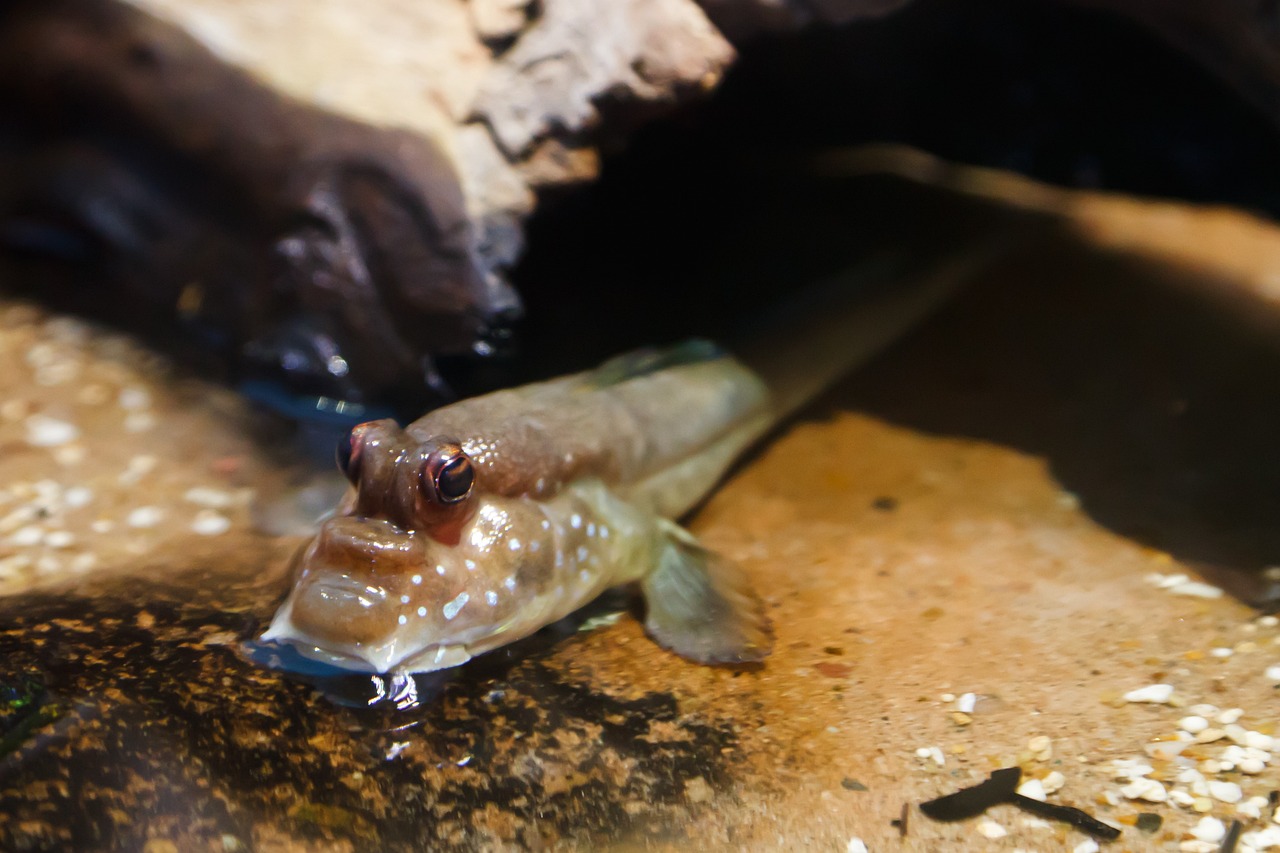
Restoration Projects
Restoration projects are vital for the revival of mangrove ecosystems, which have been severely impacted by human activities and climate change. These initiatives focus on replanting mangrove trees and rehabilitating degraded areas, aiming to restore the natural habitat that supports a diverse array of marine life. Imagine walking through a once-thriving mangrove forest, now barren and lifeless, and then witnessing the transformation as dedicated efforts breathe life back into the ecosystem. This is the essence of restoration projects.
One of the most effective strategies involves the replanting of native mangrove species. By using species that are native to the area, restoration projects can ensure that the ecological balance is maintained. For instance, the following table highlights some common mangrove species used in restoration efforts:
| Species | Common Name | Distribution |
|---|---|---|
| Rhizophora mangle | Red Mangrove | Tropical and subtropical regions |
| Avicennia germinans | Black Mangrove | Coastal areas of the Americas |
| Laguncularia racemosa | White Mangrove | Coastal regions of the Americas |
In addition to replanting, restoration projects often include community involvement, which is essential for their success. Local communities are engaged in various ways, from participating in planting activities to learning about the importance of mangroves for biodiversity and coastal protection. This hands-on approach not only empowers individuals but also fosters a sense of ownership and responsibility towards the ecosystem.
Moreover, these projects often incorporate monitoring and maintenance phases to ensure that the newly planted mangroves thrive. Regular assessments help identify challenges such as pests or diseases and allow for timely interventions. These efforts are crucial as they contribute to the overall health of the mangrove ecosystem, which in turn supports the myriad of species that depend on it.
In conclusion, restoration projects for mangrove forests are not just about planting trees; they represent a comprehensive approach to rebuilding an ecosystem that is vital for marine biodiversity. By combining scientific knowledge, community engagement, and ongoing maintenance, these initiatives can help reverse the damage done and pave the way for a healthier, more resilient coastal environment.
- What are mangrove forests? Mangrove forests are coastal ecosystems characterized by salt-tolerant trees and shrubs that thrive in intertidal zones.
- Why are mangroves important for marine life? Mangroves provide essential habitats for various marine species, acting as nurseries and feeding grounds, thus enhancing biodiversity.
- How can I get involved in mangrove restoration? You can participate in local restoration projects, volunteer with environmental organizations, or support initiatives that focus on coastal conservation.
- What are the main threats to mangrove forests? Major threats include deforestation, climate change, pollution, and coastal development, which can lead to habitat loss and degradation.
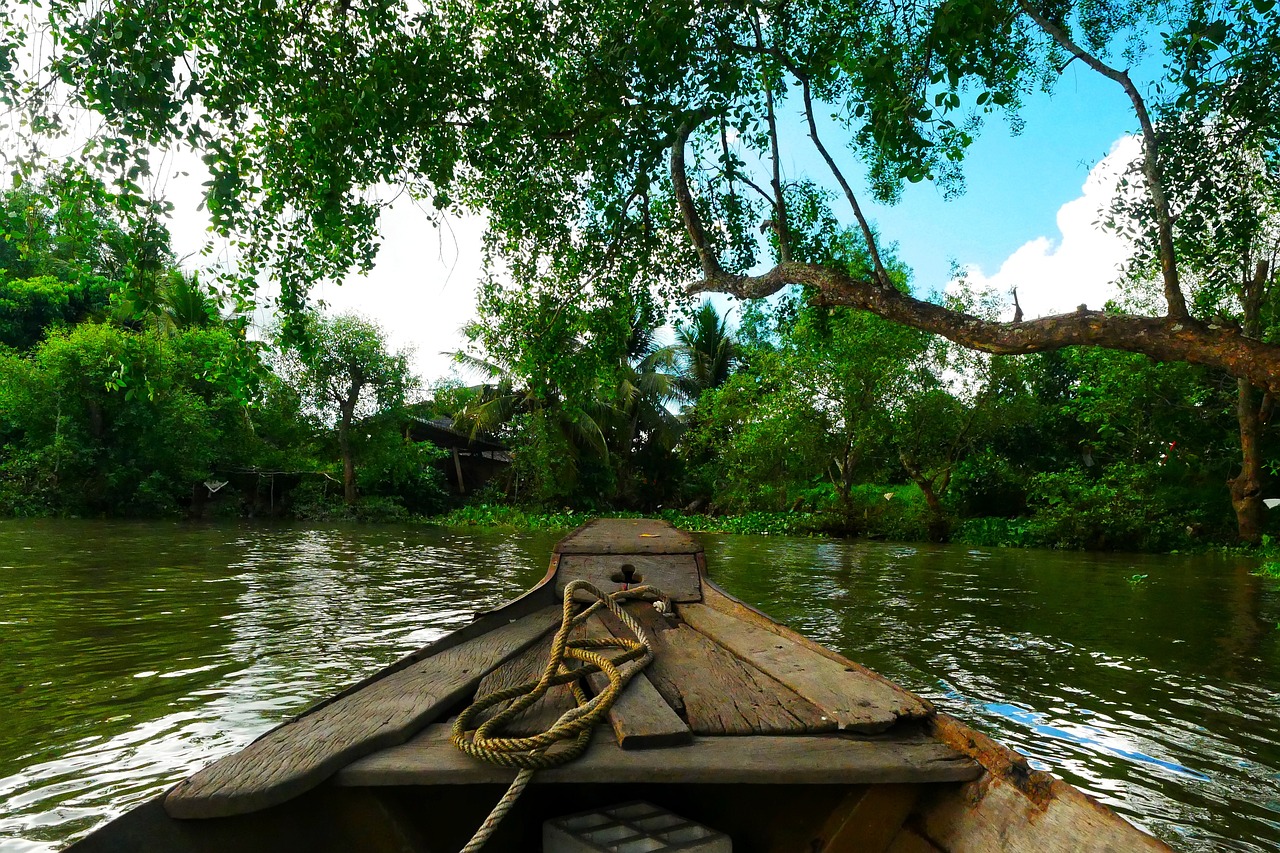
Community Involvement
Community involvement plays a crucial role in the conservation of mangrove forests. When local communities engage in the stewardship of these vital ecosystems, they not only contribute to their protection but also enhance their own livelihoods. By participating in conservation efforts, communities can ensure that mangroves continue to provide essential resources such as fish, wood, and coastal protection.
One of the most effective ways to foster community involvement is through education and awareness programs. These initiatives help locals understand the importance of mangroves, not just for marine biodiversity but also for their own well-being. When communities recognize that healthy mangroves can lead to better fishing yields and reduced coastal erosion, they are more likely to take action to protect them.
Moreover, community-led restoration projects can be incredibly impactful. For instance, local volunteers can participate in tree planting events, where they physically contribute to the reforestation of degraded mangrove areas. This hands-on involvement creates a sense of ownership and responsibility towards the ecosystem. In many cases, these projects also include educational workshops that teach sustainable practices, ensuring that communities can benefit from mangroves without depleting their resources.
Local knowledge is also invaluable in conservation efforts. Residents often have a deep understanding of their environment, including seasonal changes and species behavior. By incorporating this knowledge into conservation strategies, organizations can create more effective and culturally relevant programs. For example, traditional fishing practices that respect the breeding seasons of fish can be integrated into modern sustainable fishing initiatives.
Furthermore, community involvement can lead to the establishment of co-management agreements between local communities and governmental or non-governmental organizations. These agreements often outline shared responsibilities for the management of mangrove resources, allowing communities to have a say in decisions that affect their environment. This collaborative approach not only empowers locals but also ensures that conservation measures are more likely to be successful.
In summary, community involvement is not just beneficial; it is essential for the conservation of mangrove forests. By fostering a sense of ownership, promoting education, and incorporating local knowledge, we can create a sustainable future for these vital ecosystems. The health of mangroves directly correlates with the well-being of coastal communities, making their preservation a shared responsibility.
- What are mangrove forests? Mangrove forests are coastal ecosystems characterized by salt-tolerant trees and shrubs that thrive in intertidal zones.
- Why are mangroves important for marine biodiversity? They provide essential habitats for various marine species, acting as nurseries for fish and sustaining diverse wildlife.
- How can communities get involved in mangrove conservation? Communities can participate through education programs, restoration projects, and co-management agreements with organizations.
- What threats do mangrove forests face? Major threats include deforestation, climate change, pollution, and coastal development.
- How can I support mangrove conservation efforts? You can support through donations to conservation organizations, participating in local restoration events, or advocating for sustainable practices.
Frequently Asked Questions
- What are mangrove forests and why are they important?
Mangrove forests are unique coastal ecosystems that thrive in salty environments, typically found in tropical and subtropical regions. They are crucial for marine biodiversity as they provide essential habitats for various species, including fish, crustaceans, and birds. These ecosystems act as nurseries for juvenile marine organisms, offering food and protection from predators, which is vital for maintaining healthy fish populations.
- How do mangroves support marine life?
Mangroves support marine life by creating complex root systems that provide shelter and breeding grounds for numerous species. Fish populations benefit significantly from these habitats, as they serve as nurseries where young fish can grow and thrive. Crustaceans find ideal living conditions among the intricate roots, contributing to the coastal food web. Additionally, various bird species rely on mangroves for nesting and feeding, highlighting the interconnectedness of these ecosystems.
- What threats do mangrove forests face?
Mangrove forests are under threat from multiple factors, primarily due to human activities such as coastal development, agriculture, and aquaculture. These actions lead to habitat loss and degradation, which can severely impact marine biodiversity. Moreover, climate change poses significant risks, including rising sea levels and increased storm intensity, further endangering these vital ecosystems.
- What conservation efforts are being made to protect mangroves?
Conservation efforts for mangrove forests include restoration projects aimed at replanting and rehabilitating degraded areas. These initiatives not only restore habitats but also enhance biodiversity and help mitigate climate change impacts. Community involvement is equally important; engaging local populations in conservation fosters stewardship and ensures sustainable use and protection of these essential ecosystems for future generations.



















